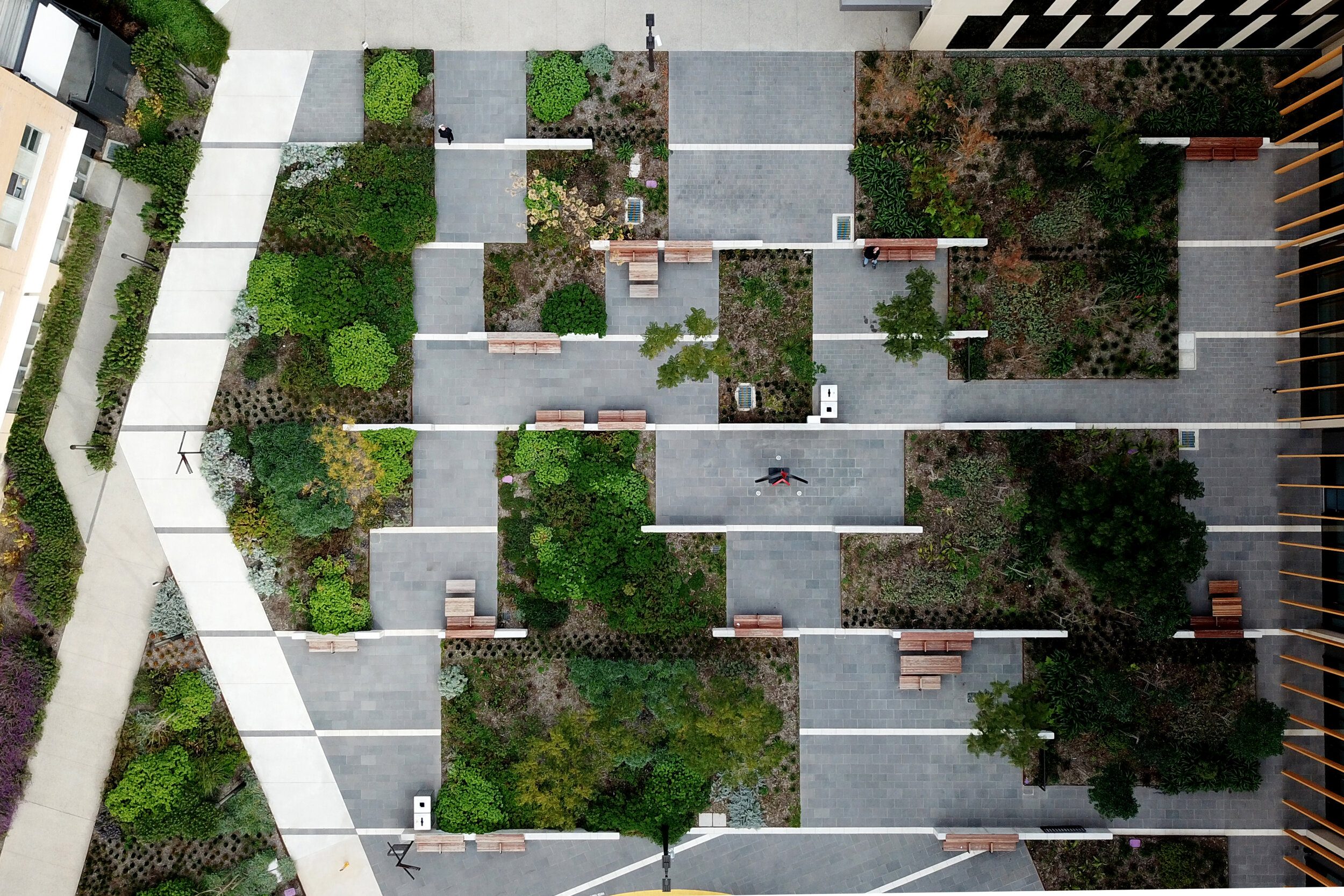Bendigo Hospital delivers social, environmental & cultural benefits
By OCULUS
Australia’s multi-award winning Bendigo Hospital is the largest hospital in Victoria, delivering world-class healthcare facilities across a 13-hectare precinct. References to the site’s history and ecology have helped deliver social, environmental and cultural benefits with a strong sense of place, for patients, staff, visitors and the community.
The OCULUS design was derived through extensive engagement with numerous stakeholders including hospital staff, community groups and local government. It was delivered as a public-private partnership (PPP) under the State Government’s Partnerships Victoria policy combing landscape architecture, architecture and design, health planning, engineering and construction.
A variety of planting provides an interesting tapestry around the site. Image: Mark Laririt.
Both the project brief and site posed a number of significant challenges including: the precinct scale and establishment of two-sub precincts, accreted heritage buildings and demolished buildings, the need to support the future growth of Bendigo, considerable topographic transition across the site, significant safety in design considerations for people with limited mobility and where higher levels of safety and security required in the mental health unit, the complexity of designing a large number of multi-level landscapes on structure that were heavily integrated into the building with varying levels of exposure and enclosure, complex user group, client and consultant engagement, access and maintenance and a 25 year design life.
The landscape architectural design drivers - connection and kindness - foregrounded a legible structure, developing a walkable precinct with a clear hierarchy of streets and walkways that engage with the broader city, heritage buildings and topography.
Sweeping terraced garden beds.
Canopy cove and green links provide a high-quality vibrant public realm, with a north-south civic axis creating an important, inviting through-site link.
Providing choice helps to minimise stress in healthcare environments, so a diversity of community, collaborative and private spaces was created across the precinct and throughout over 46 balconies, green roofs, roof decks, and courtyards.
The site includes many pocket spaces, including 20 mental health courtyards. Image: Tom Adolph
OCULUS used an evidence-based, and Biophilic Design approaches across the project, incorporating fractal leaf structures and utilising natural and local materials, moving water and textured planting.
Green infrastructure initiatives include water sensitive urban design, structural soils and with significant increases in biodiversity, habitat and the urban forest, restoring valuable ecological and hydrological systems across the precinct.
Recognising the region’s significant cultural heritage, the design team collaborated with the Dja Dja Wurrung Clans Aboriginal Corporation, including the co-design of the Aboriginal Services Courtyard, with a fire pit and planting, to enable cultural practice and education.
Each garden has been designed for a specific purpose. Two internal courtyards have a higher density of planting so if patients are having chemotherapy for example, they can look out at the greenery. Image: Tom Adolph
Within the broader precinct, an aboriginal garden incorporates more local indigenous planting and celebrates a valuable cultural artefact, a relocated scarred tree. Construction of the garden created employment opportunities for the Dja Dja Wurrung.
Local Chinese history is celebrated in a dedicated community garden, and site-specific public artworks from Bendigo Art Gallery and several artists, are integrated across the precinct.



